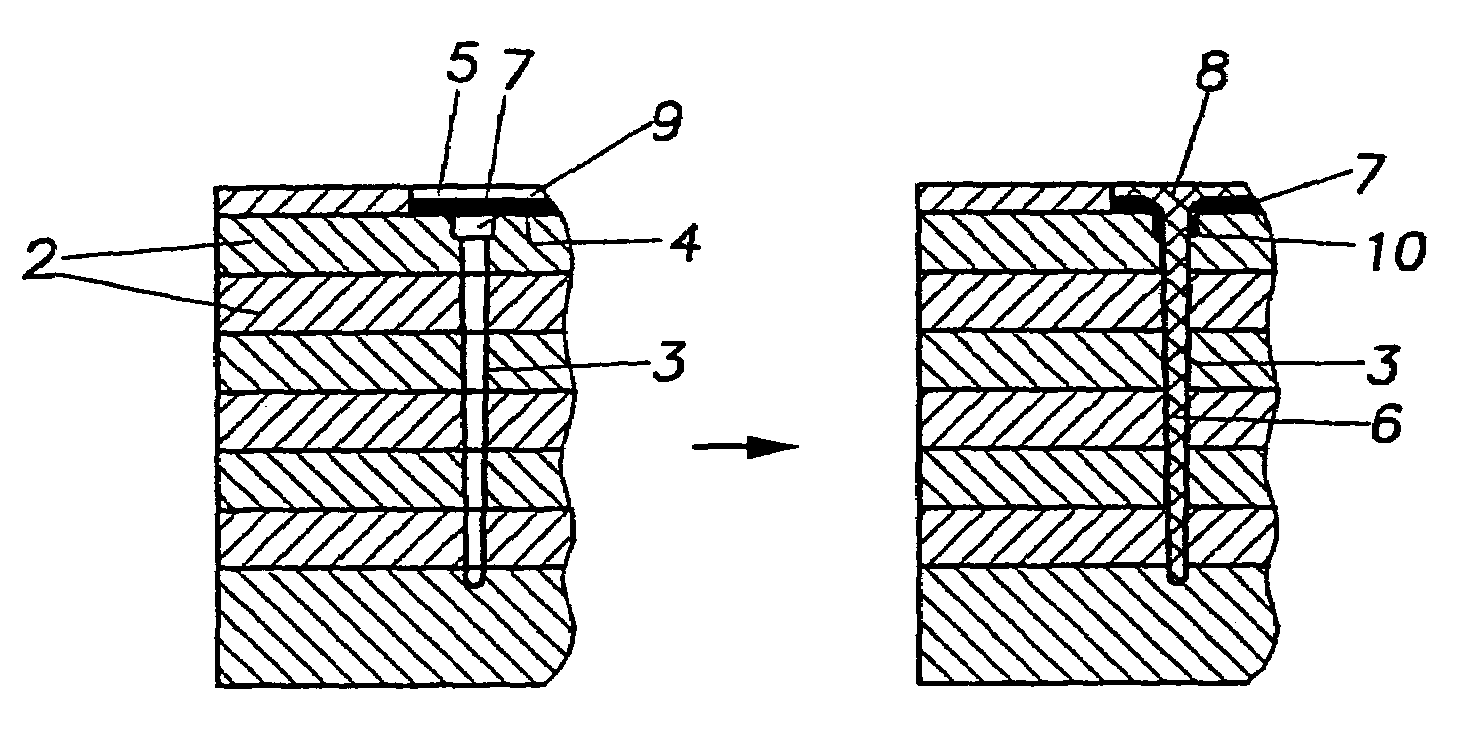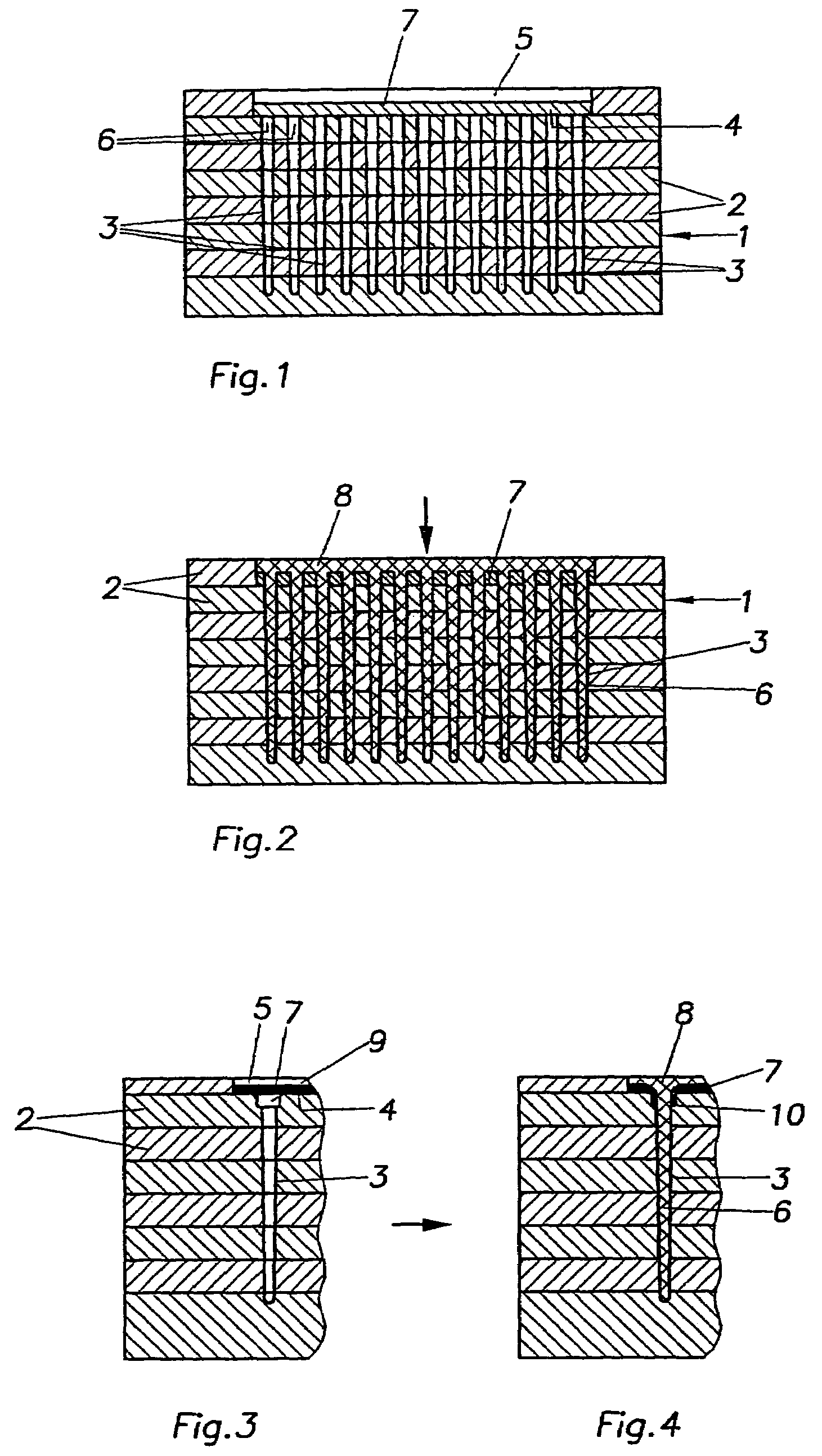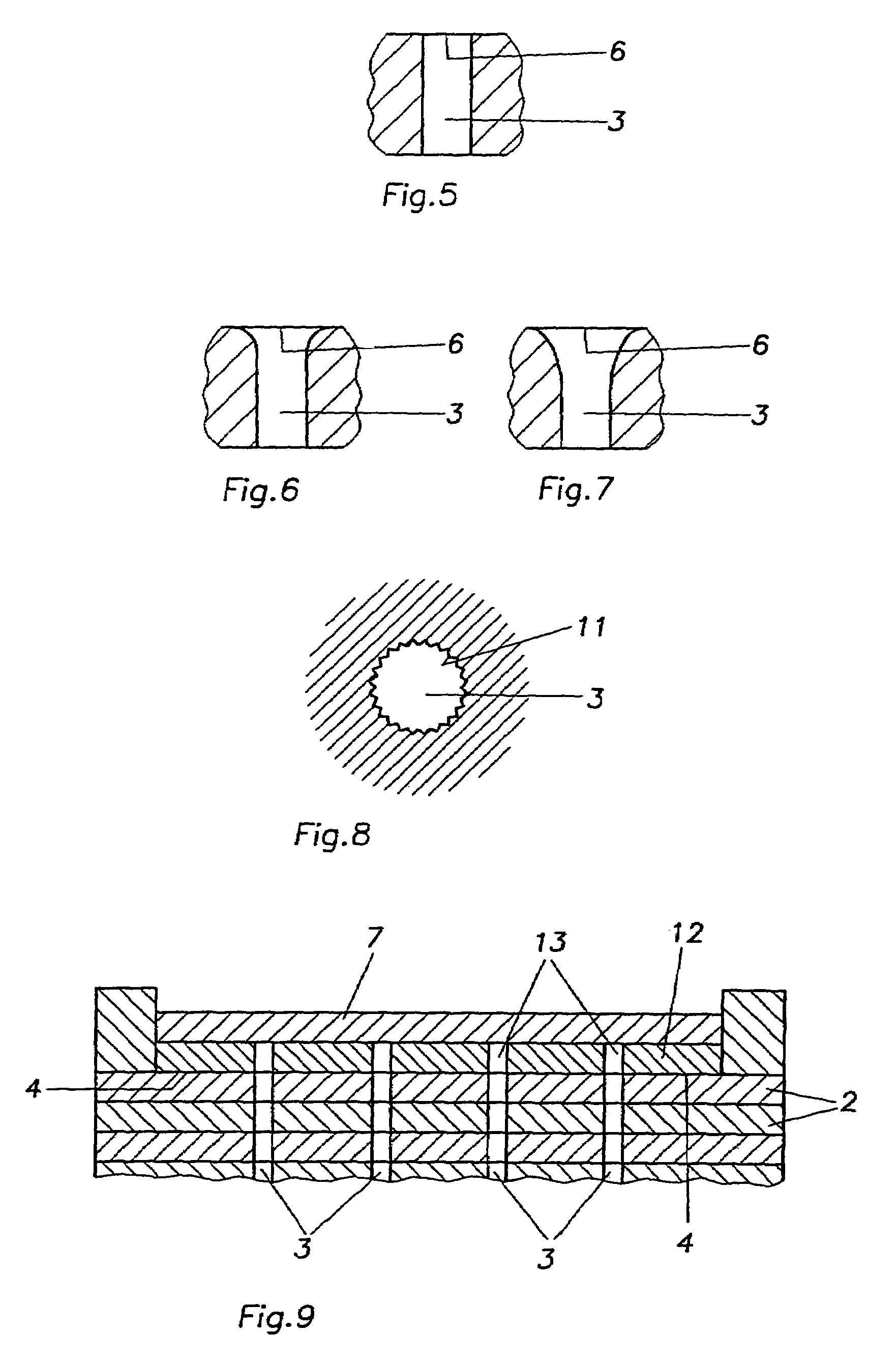Method for the production of a bristle structure on a carrier
a manufacturing method and bristle technology, applied in the direction of brushes, domestic objects, moulds, etc., can solve the problems of insufficient fatigue strength of injection molded bristles under reverse bending stresses, limited application, and increased costs
- Summary
- Abstract
- Description
- Claims
- Application Information
AI Technical Summary
Benefits of technology
Problems solved by technology
Method used
Image
Examples
Embodiment Construction
[0093]FIG. 1 schematically shows a molding tool 1, or a portion thereof, which is preferentially not of solid construction, rather is built up from parallel layered plates 2 whose purpose and action are described more closely in WO 02 / 03831 (DE 10033256 and DE 10130863) and in the unpublished patent applications DE 10301635.6 and DE 10212781.8, both due to the assignee of the instant application. The mold tool has a tool portion 1 having a plurality of preferentially parallel channels 3 in which the bristles are molded. The channels 3 extend from mold walls 4 and preferentially travel in a slightly conical fashion towards their closed ends. A carrier 7 is inserted into the mold cavity 5 onto the molding walls 4 and covers the free cross-section 6 of the molding channels 3.
[0094]The mold tool can be an injection molding, a pressure molding or a press-molding tool. The mold mass for the bristles is introduced into the mold cavity 5 with a sufficient amount of pressure to penetrate or ...
PUM
| Property | Measurement | Unit |
|---|---|---|
| Thickness | aaaaa | aaaaa |
| Thickness | aaaaa | aaaaa |
| Pressure | aaaaa | aaaaa |
Abstract
Description
Claims
Application Information
 Login to View More
Login to View More - R&D
- Intellectual Property
- Life Sciences
- Materials
- Tech Scout
- Unparalleled Data Quality
- Higher Quality Content
- 60% Fewer Hallucinations
Browse by: Latest US Patents, China's latest patents, Technical Efficacy Thesaurus, Application Domain, Technology Topic, Popular Technical Reports.
© 2025 PatSnap. All rights reserved.Legal|Privacy policy|Modern Slavery Act Transparency Statement|Sitemap|About US| Contact US: help@patsnap.com



